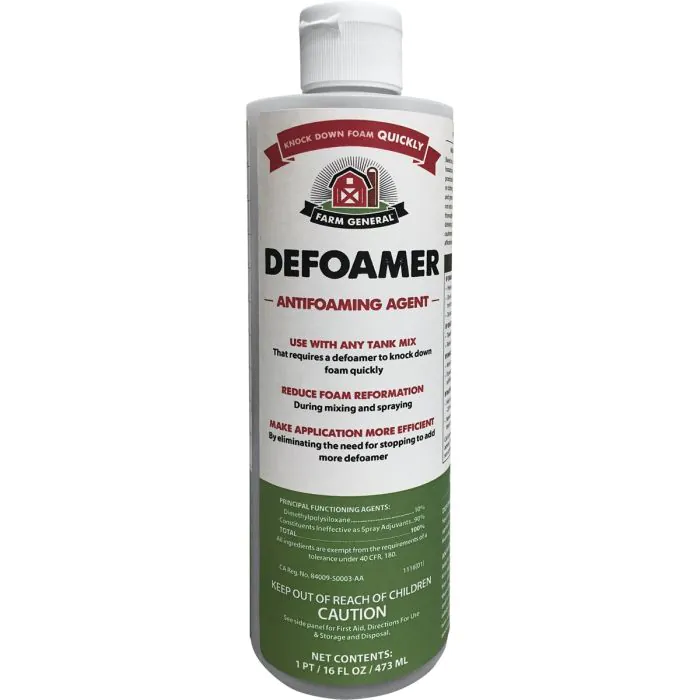Understanding How a Chemical Defoamer Works to Enhance Industrial Processes
Chemical defoamers play a pivotal role in enhancing commercial processes by efficiently mitigating foam-related challenges. What continues to be to be discovered is exactly how these defoamers can be tailored to meet specific functional needs.
What Is a Chemical Defoamer?
A chemical defoamer is a compound specifically formulated to lower or remove the formation of foam in different industrial procedures. Lathering can disrupt production performance, impacting the quality and efficiency of items in industries such as food and drink, drugs, and wastewater treatment. Defoamers are crucial in these applications, as too much foam can result in operational obstacles, such as overflow, decreased mixing effectiveness, and hindered warmth transfer.
These representatives generally include a mix of surfactants, oils, and other ingredients that work to undercut the foam structure. They are made to rapidly move to the foam's surface, effectively damaging the surface stress and allowing for the collapse of bubbles. The choice of an appropriate defoamer is crucial, as different solutions may be customized for particular processes or kinds of foam (Chemical Defoamer). Elements such as compatibility with various other ingredients, temperature level stability, and the designated application play a significant function in the performance of a defoamer.
Systems of Defoaming Activity
The mechanisms of defoaming activity entail complex interactions in between the foam and the defoamer structure. At the core of this process is the decrease of surface area stress at the interface of the liquid and gas stages. When a defoamer is presented to a foaming system, it migrates quickly to the surface area of the foam bubbles, displacing the maintaining agents that add to foam stability. This displacement deteriorates the foam framework, leading to bubble coalescence.
As smaller bubbles merge into larger ones, the overall stability of the foam decreases. Furthermore, specific defoamers might consist of hydrophobic parts that boost their capacity to undercut the foam by developing an obstacle that hinders bubble development. This double activity-- surface tension reduction and destabilization-- allows for a more efficient break down of foam.

Moreover, the viscosity and spreading attributes of the defoamer play crucial functions in its efficiency. A well-formulated defoamer will ensure quick movement and ideal performance, minimizing foam development throughout industrial processes. By recognizing these systems, markets can better pick and use chemical defoamers to improve functional performance and product quality.
Sorts Of Chemical Defoamers
Chemical defoamers can be classified into numerous types, each tailored to details applications and foam difficulties. The primary categories include silicone-based, non-silicone-based, and powder defoamers.
Silicone-based defoamers are highly reliable as a result of their ability to spread out quickly across fluid surfaces. They give exceptional foam suppression and security, making them appropriate for numerous commercial applications, including layers and adhesives. Non-silicone-based defoamers, on the other hand, commonly count on natural compounds like fats or esters. These are especially preferred in food and beverage hop over to these guys sectors because of their reduced toxicity and governing compliance.
Powder defoamers are composed of solid bits that can be contributed to dry procedures or formulas. They are typically made use of in procedures where fluid defoamers may not work, supplying an unique service for details applications, such as in the production of specific kinds of plastics or powders.
Furthermore, each kind of defoamer can be customized with different ingredients to enhance efficiency, such as surfactants or emulsifiers, enabling flexibility in attending to various foaming situations throughout numerous sectors.
Applications in Industrial Processes

In the food and drink market, defoamers are vital during the manufacturing of juices, beers, and milk products, where too much foam can hinder blending and purification procedures. By minimizing foam formation, defoamers aid preserve consistent item quality and maximize processing times.
In drugs, the existence of foam throughout the mixing and solution of medicines can affect dosage accuracy and product stability. Defoamers guarantee smooth operations, thus assisting in the production of top quality pharmaceuticals.
Wastewater therapy centers also depend on defoamers to control frothing in aeration storage tanks, which can or else decrease therapy efficiency and complicate sludge handling. By properly managing foam, these chemicals improve the total performance of therapy procedures and add to click reference regulative conformity.

Benefits of Using Defoamers
While foam can present substantial obstacles throughout different sectors, making use of defoamers supplies various benefits that boost functional effectiveness and product integrity. Defoamers properly get rid of or reduce foam development, bring about smoother production processes and boosted item high quality. This reduction in foam decreases interruptions during production, enabling for constant procedure and boosted throughput.
Furthermore, the application of defoamers can lead to set you back savings by decreasing the demand for excess basic materials and energy usage connected with foam monitoring. By enhancing the production procedure, producers can attain higher yields and reduced waste, ultimately enhancing success.
In addition, defoamers add to better devices performance. Foam accumulation can lead to obstructing, overflow, and equipment wear, causing costly downtime and upkeep. By preventing these concerns, defoamers extend the life-span of machinery and minimize operational expenses.
Verdict

A chemical defoamer is a substance especially developed to decrease or remove the development of foam in various commercial processes. When a defoamer is presented to a lathering system, it moves quickly to the surface of the foam bubbles, displacing the supporting agents that add to foam stability. A well-formulated defoamer will certainly guarantee quick migration click over here and optimum performance, minimizing foam development during commercial processes. Defoamers efficiently decrease or remove foam formation, leading to smoother manufacturing processes and boosted product top quality.In conclusion, chemical defoamers play an essential role in boosting industrial procedures by effectively minimizing foam development.